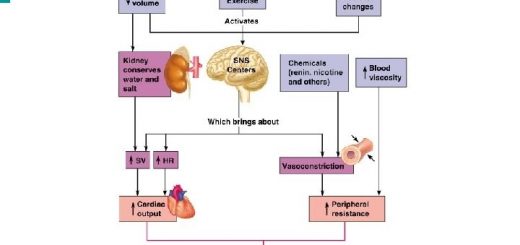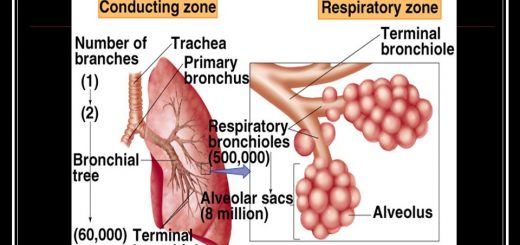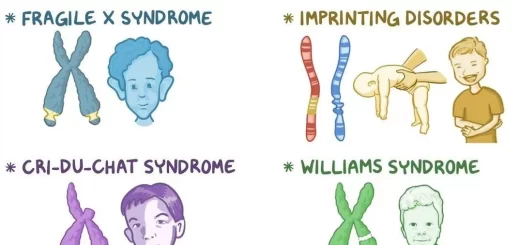Muscular tissue types, function, structure, definition and anatomy
Muscle tissue consists of muscle fibers, It is formed during embryonic development through a process known as myogenesis, and it is responsible for movements in our body. Muscular tissues consist of fibers of muscle cells connected together in sheets and fibers, and they are known as muscles and control the movements of organisms as well as many other contractile functions.
The muscular tissue
Muscular tissue is one of the primary tissues of the body. It is specialized for contraction and to a lesser degree for conductivity. Muscle tissue is connected to the same nerve bundles, The nerve impulse traveling from the brain or another outside signal tells the muscle to contract, The nerve impulse is transferred to the nerve cells in the muscle tissue, and the entire muscle contracts.
General characteristics of muscular tissue
Each type of muscles has its own particular characteristics, but all the types have common features which are:
- Muscle cells are elongated and thin, so they are called muscle fibers.
- The muscle fiber is surrounded by sarcolemma and its cytoplasm is called sarcoplasm (sarkos = flesh).
- The most important organelles are Myofibrils, Mitochondria, and Sarcoplasmic reticulum; it is the smooth endoplasmic reticulum of the muscle fibers.
- The main muscle inclusions are Glycogen granules, Fat droplets, and Myoglobin pigment.
- The muscular tissue is a composite tissue that incorporates an amount of connective tissue. The importance of connective tissue component:
- It is needed to supply the muscle fibers, which have a very active metabolism, with their needs of nutrients and oxygen. Capillaries that provide these essentials together with lymphatics and nerves are located within the connective tissue component of the muscle.
- It is essential for force transduction; at the end of the muscle, the connective tissue continues as a tendon that attaches the muscle to bone.
Skeletal muscles
Site:
- The majority of skeletal muscles are attached to the skeleton.
- Some skeletal muscles are not attached to the skeleton e.g. ocular muscles and muscles of the face, the tongue, the pharynx, and the upper two-thirds of the esophagus.
Histological structure of skeletal muscle fibers
On examination with the light microscope (LM), a skeletal muscle appears formed of groups of skeletal muscle fibers surrounded by connective tissue.
Connective tissue component
- Epimysium: a sheath of dense connective tissue surrounding the entire muscle. Collagen fibers of the epimysium are continuous with those of the dense connective tissue of the tendon and the periosteum on which the muscle pulls.
- Perimysium: thin fibrous septa extending from the epimysium to divide the muscle fibers into bundles (fascicles) i.e. the perimysium surrounds each muscle fascicle.
- Endomysium: a thin layer of reticular fibers extending from the perimysium and surrounding each muscle fiber separately. Blood vessels and nerves penetrate the epimysium to the perimysium and endomysium but lymphatic vessels are present in the epimysium and perimysium only.
Skeletal muscles fibers or rhabdomyocytes
In longitudinal sections: These are long cylindrical cells (fibers) arranged parallel to each other. Each skeletal muscle fiber is multinucleated; the nuclei are elongated, oval and are peripherally situated lying under the sarcolemma. The sarcoplasm is eosinophilic as it is filled with numerous longitudinally-oriented myofibrils. At relatively high magnification, the muscle fibers show a characteristic transverse striated appearance because:
- Each myofibril shows alternate light (I) and dark (A) bands.
- Similar bands of adjacent myofibrils are placed side by in one level.
- Myofibrils are closely packed within the muscle fiber.
- Each I band is bisected by a narrow dark line called Z line. The Z line passes right across the muscle fiber to join the sarcolemma.
- Each A band is bisected by a pale band called H zone (band). This pale H band is bisected by a darker line called the M line.
- The portion of a myofibril between two successive Z lines is called a sarcomere (functional unit of the myofibril).
In cross-sections: Each muscle fiber appears polyhedral in shape. According to the level of cut, some muscle fibers show no nuclei while others show one or more peripheral nuclei. The myofibrils appear as coarsely granular areas separated from each other by narrow regions of sarcoplasm.
Electron microscopic appearance (ultrastructure) of the muscle fiber
On examination with the EM, the study of the internal structure of the muscle fiber revealed the abundance of myofibrils and mitochondria and sarcoplasmic reticulum. The sarcoplasm fills all the interstices between the myofibrils and is most abundant at the poles of the nuclei.
1 – The myofibrils
The myofibrils are made up of smaller longitudinal structures known as myofilaments. Two principal types of myofilaments have been identified; thick and thin.
Organization of myofilaments in the sarcomere:
- The thick myofilaments extend from one end of the A band to the other, i/e. both ends of the thick myofilaments are free. They are composed of a protein called myosin.
- The thin myofilaments are attached to the Z line by one end and then extend from it towards the margin of the H zone where they end freely. The thin myofilaments are composed of a protein called actin together with two other associated proteins called tropomyosin and troponin.
According to the arrangement of thin and thick myofilaments:
The H band is formed of thick myofilaments only. The M line is the site where fine transverse filaments connect the thick myofilaments and keep them grouped in bundles. The Z line is the site where the ends of thin myofilaments of two adjacent sarcomeres are attached. It consists of filaments of a-actinin.
Molecular structure of myofilaments:
The thin myofilament is formed of the following:
- The actin filament is composed of monomers of globular actin ”G actin” polymerized to form two strands of fibrillar actin (F actin” which coil around each other to form the double helix of the actin filament.
- The tropomyosin is a rigid filament that fits in the spiral groove along the double helix of actin for reinforcement.
- The troponin complexes are attached to the tropomyosin filament at regular intervals and are involved in regulating muscle contraction. Each troponin complex is composed of troponin C (TnC) binding calcium, troponin T (TnT) binding to tropomyosin, and troponin I (TnI) inhibiting actin-myosin interactions. This inhibition ends when troponin C binds calcium.
The thick myofilament is composed of about 350 myosin molecules. Each myosin molecule has a long tail formed of two coiled polypeptides chains and two globular heads; each has two binding sites, one for ATP and one for actin.
Functional states of sarcomere during contraction
Contraction occurs due to the sliding of thin myofilaments over thick myofilaments. Thus during muscular contraction:
There is no change in the length of:
- The thin and thick myofilaments.
- The A bands.
There is shortening in the length of:
- The sarcomere.
- The I bands.
- The H zones (they may even disappear).
2 – The transverse tubules (T tubules)
These are tubular invaginations of the sarcolemma that penetrate deep into the interior of the muscle fiber. They branch to encircle each myofibril transversely at the junction between the A and I bands. According to this arrangement, each sarcomere is encircled by two T tubules.
Function: T tubules conduct a wave of depolarization simultaneously to all the myofibrils of a muscle fiber so that they contract all that at the same time.
3 – Sarcoplasmic reticulum
It consists of a branching network of smooth endoplasmic reticulum surrounding each myofibril. The sarcoplasmic reticulum is formed of two components:
- Sarcotubules: they run longitudinally.
- Terminal cisternae: they are collar-like dilatation completely surrounding each myofibril. Two terminal cisternae are located at the level of the A-I junction and are separated from each other by a T tubule. This arrangement of the two terminal cisternae and the centrally-situated T tubule is known as a triad. Therefore, each sarcomere in the skeletal muscle is encircled by two triads. Function: to regulate the concentration of calcium ions within the myofibrils.
Muscles types, Skeletal muscle parts, Lymphatic system structure & function
Muscular system, Structure of skeletal muscle, Muscles properties & functions
Functions of Lymphatic system, Structure of Lymph nodes, Spleen & Tonsils
Neuro-Muscular Junction properties, Functions & types of skeletal muscles



